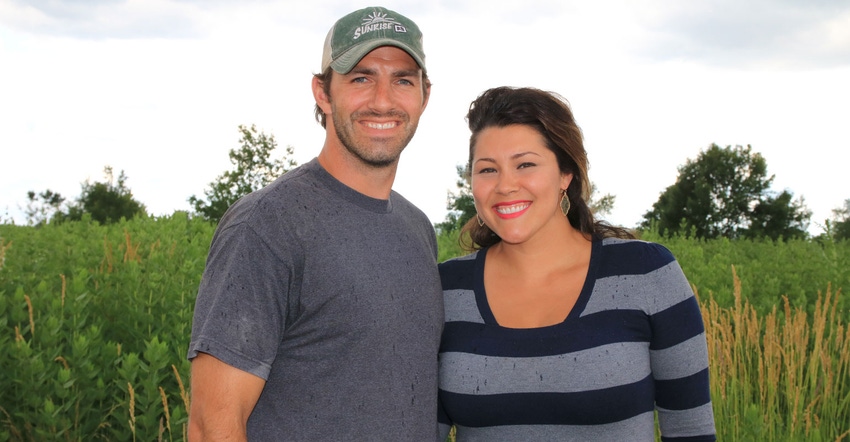
While there were many unforeseen struggles this planting season, there’s been a silver lining to the shutdown for Justin and Jessica Lane of Virginia, Ill.
“We hope that someday, our kids will look back on the year of COVID-19 as the year they fell in love with farming,” Jessica says. “They probably will not remember remote learning from home, but rather the time outside, getting involved with planting season in a way they never have before.
“As parents, we also hope that we’ll look back on this year and remember all the good, because there really has been so much joy amid so much craziness.”
Essentially, they turned Justin’s tractor into day care. Nine-year-old Cooper, 7-year-old McKenna and 2-year-old Mary Kate strengthened their bonds with agriculture in a way that wouldn’t have happened without a pandemic.
“This is one of those spring seasons that was really tough on us. And yet, our kids are going to have really fond memories,” Jessica says, noting of their 2-year-old, “All she says now is ‘tractor, tractor, tractor.’”
Jessica works full time for a global marketing company, ScentAir, while Justin manages his family’s corn and soybean farm with his father, Rick. He also helps his father manage a custom applicator business in Colombia.
Justin came back to the family farm four years ago after 10 years working for Caterpillar. At first, he farmed family ground in Mason County, Ill., but by year two, he and his father took on a 1,500-acre lease in Menard County. By year three, they took on another lease in Cass County at Jim Edgar Panther Creek State Fish and Wildlife Area that totaled 1,000 acres.
“Over the course of three years, we went from 1,000 acres to about 4,000,” Justin says, adding the new acreage came with growing pains. The top two challenges are having enough people and equipment to get the job done on time. “We continue to look at how we can better utilize what we have to improve efficiency while maintaining profitability.”
One way they were able to increase their bottom line on the new acreage was buying a sprayer and doing most of the herbicide and fertilizer applications themselves.
“You can buy wholesale chemicals significantly cheaper than you can from the retailer. We’re saving money over and above the cost of the sprayer on chemicals,” Justin says.

PAYING FOR ITSELF: Justin Lane says he and his father, Rick, bought a Case IH SPX4420 sprayer a few years ago that’s paid for itself with the amount of money they save buying inputs wholesale rather than through a retailer.

While he saves on chemicals, he doesn’t skimp on them. He and and his dad start with clean tilled fields by deploying a vertical-tillage tool right before planting. He applies residual herbicides, metolachlor and atrazine, on a preemergence pass. Then around V4, he applies atrazine, an ALS inhibitor and an HPPD inhibitor to clean up grasses and broadleaves while providing residual control in-season.
“If you can get the corn and soybeans to canopy and you’re still clean, chances are you’re going to be in good shape for the rest of the season, from a weed perspective. That’s our goal,” Justin says.
Getting connected
Justin and Jessica are members of the Cultivating Master Farmers program, a two-year schedule of gatherings between young farmers and Master Farmer award recipients sponsored by Farm Credit Illinois, Compeer Financial, Illinois Farm Bureau, Growmark, Bayer and Prairie Farmer.
Justin says he’s been able to gain valuable information from more seasoned farmers in the program at gatherings that occurred before the COVID-19 shutdown took hold. While future meetings have been postponed, he’s still able to catch up with farmers from around the state on social media.
“There’s comfort in seeing we’re not alone in our challenges to try and balance it all,” Jessica concludes.
About the Author(s)
You May Also Like




